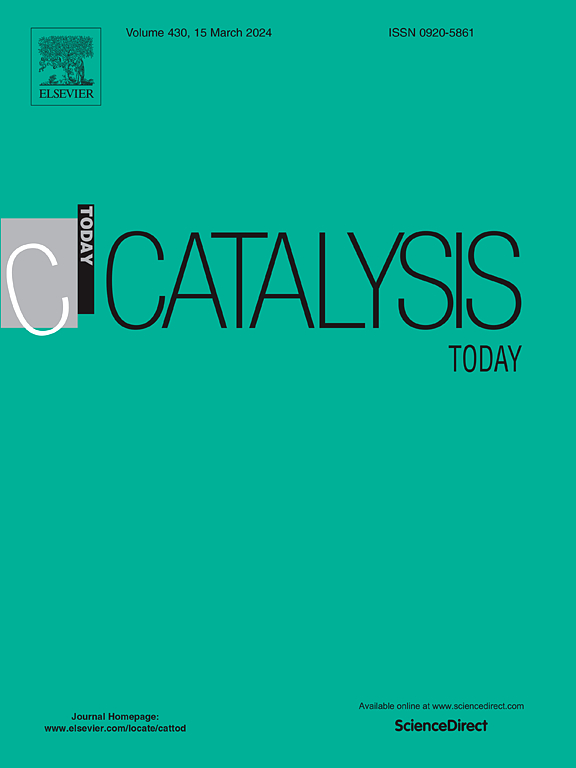A detailed DFT theoretical investigation of the mechanism of quinoline hydrogenation catalyzed by a (1,5-cyclooctadiene)rhodium(I) complex
IF 5.2
2区 化学
Q1 CHEMISTRY, APPLIED
引用次数: 0
Abstract
A detailed catalytic cycle for the hydrogenation of quinoline (Q) to 1,2,3,4-tetrahydroquinoline (THQ) catalyzed by a cationic rhodium complex containing a 1,5-cyclooctadiene (COD) ligand was computationally investigated by using DFT. It was found that the catalytically active species was [Rh(COD)(κN-Q)]+ and that the addition of each of the two dihydrogen molecules occurs through the initial coordination of dihydrogen forming η2-H2 intermediates, followed by the subsequent hydride transfer to Q and DHQ ligands (i.e., migratory insertion and reductive elimination), respectively. Except the reductive elimination of the THQ product, all of the elementary steps of the catalytic cycle were reversible, which is an important point in connection with the hydrogen storage models. Our theoretical DFT calculations are consistent with the experimental results previously reported, but additionally provides important information that allows us to have a deeper insight into the reaction mechanism and, therefore, to present a more detailed catalytic cycle for this reaction.
求助全文
约1分钟内获得全文
求助全文
来源期刊

Catalysis Today
化学-工程:化工
CiteScore
11.50
自引率
3.80%
发文量
573
审稿时长
2.9 months
期刊介绍:
Catalysis Today focuses on the rapid publication of original invited papers devoted to currently important topics in catalysis and related subjects. The journal only publishes special issues (Proposing a Catalysis Today Special Issue), each of which is supervised by Guest Editors who recruit individual papers and oversee the peer review process. Catalysis Today offers researchers in the field of catalysis in-depth overviews of topical issues.
Both fundamental and applied aspects of catalysis are covered. Subjects such as catalysis of immobilized organometallic and biocatalytic systems are welcome. Subjects related to catalysis such as experimental techniques, adsorption, process technology, synthesis, in situ characterization, computational, theoretical modeling, imaging and others are included if there is a clear relationship to catalysis.
 求助内容:
求助内容: 应助结果提醒方式:
应助结果提醒方式:


